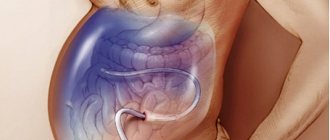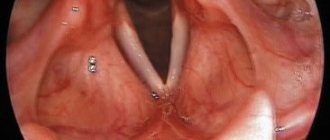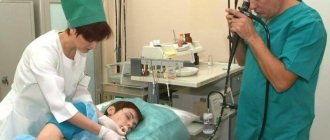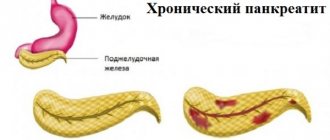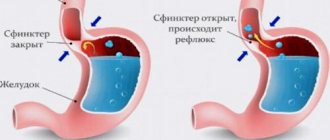Quick transition Treatment of laryngopharyngeal reflux
Laryngopharyngeal reflux (LPR) is the reflux of gastric contents (acid and enzymes such as pepsin) into the larynx, leading to hoarseness, a feeling of a lump in the throat, difficulty swallowing, coughing, and a feeling of mucus in the laryngopharynx.
Reflux as a cause of the above symptoms without gastroesophageal reflux disease (GERD) is constantly being questioned. Guidelines issued by specialist societies in the field of laryngology and gastroenterology present different points of view. Both groups acknowledge that interpretation of existing studies is complicated by vague diagnostic criteria for LPR, variable treatment response rates, and large placebo effects in treatments.
There are relatively limited data on the prevalence of LPR: approximately 30% of healthy people may have episodes of reflux on 24-hour pH measurements or show characteristic changes in the larynx.
LPR can directly or indirectly cause laryngeal symptoms. The direct mechanism involves irritation of the mucous membrane of the larynx with caustic substances - refluxates (acid, pepsin). The indirect mechanism involves irritation of the esophagus, leading to laryngeal reflexes and symptoms.
Helicobacter pylori infection may also contribute. The prevalence of H. pylori among patients with LPR is about 44%.
First the definition.
Laryngopharyngeal reflux (LPR) is a painful condition that occurs due to the reflux of hydrochloric acid and gastric juice enzymes (sometimes bile) into the esophagus and further into the throat.
Other names are extraesophageal reflux, “silent” reflux.
This condition is different from classic gastroesophageal reflux disease (GERD)
Classic GERD is heartburn, sour belching, and chest pain.
Manifestations of typical GERD are described in ancient Greek treatises.
Medieval doctors discuss treatment tactics for reflux. The woman on the right has a bucket of Gaviscon.
Manifestations of reflux in the nasopharynx and respiratory tract were discussed only in the 19th and 20th centuries.
The famous physician William Osler was the first to suggest a connection between asthma and gastric reflux.
Since the late 80s of the last century, more and more doctors have become interested in such atypical manifestations of reflux. This fact can be easily tracked by the increase in the number of publications in the PubMed network.
Gastroenterologists usually consider laryngopharyngeal reflux to be an unusual manifestation of gastroesophageal reflux disease, and otolaryngologists to consider it a separate clinical condition.
They are all right...
In the case of classic GERD and in the case of laryngopharyngeal reflux, the main importance is given to the reflux of stomach contents into the esophagus. This is facilitated by relaxations of the lower esophageal sphincter that are too frequent and occur at inappropriate times, which normally should let food or water flow down, rather than release up.
The reflux into the esophagus provokes the main manifestations of classic GERD - heartburn and chest pain.
But not everyone who has GERD also has laryngopharyngeal reflux.
The opposite is also true - not everyone with LPR has typical manifestations of GERD. For example, only 35% notice heartburn.
Thus, the manifestations of reflux in the esophagus and in the respiratory tract may not occur in parallel.
Erosions and ulcers on the esophageal mucosa are the most important signs of GERD, and with LPR they are described even in adult patients in no more than 25% of cases.
Two very important facts for understanding the essence of laryngopharyngeal reflux:
- With laryngopharyngeal reflux, the upper esophageal sphincter is very important, which normally should prevent the contents of the esophagus from entering the throat.
- The mucous membrane of the throat and vocal cords is less resistant to damage by stomach contents (up to 50 episodes of reflux from the stomach into the esophagus per day).
2. Symptoms and possible complications
Symptoms of acid reflux in infants and young children may include:
- Hoarseness;
- Chronic cough;
- Barking cough;
- Noisy breathing and temporary cessation of breathing during sleep (apnea);
- Problems during feeding – regurgitation or inhalation of food;
- Problem with weight gain.
Symptoms of acid reflux in adults
Heartburn or a bitter taste and burning sensation in the back of the throat may occur. But the chance of developing these classic signs of GERD in adults is low. Most often, the signs of laryngopharyngeal reflux in adults are very vague and can be easily confused with symptoms of other diseases. The most common symptoms of acid reflux include:
- Persistent cough;
- Hoarseness;
- A lump in the throat that does not go away when swallowing;
- Feeling of mucus running down the throat;
- Problems with swallowing;
- Labored breathing;
- A sore throat.
Complications of laryngopharyngeal reflux
Stomach acid can cause long-term irritation of the throat and larynx. Without treatment, this situation is quite dangerous.
In infants and children, the consequences of laryngopharyngeal reflux can include:
- Narrowing of the area below the vocal cords;
- Ulcers;
- Recurrent ear infections;
- Continued accumulation of fluid in the middle ear.
In adults, laryngopharyngeal acid reflux
may cause scars in the throat and vocal cords. Acid reflux increases the risk of cancer in this area, affects the lungs and triggers attacks of asthma, emphysma or bronchitis if a person is prone to these diseases.
Visit our Gastroenterology page
What predisposes to reflux?
- periodic relaxation of the lower esophageal sphincter. They should be normal, as they help the stomach get rid of excess swallowed air, but if they are prolonged and frequent, they lead to GERD
- persistently low tone of the lower esophageal sphincter in some people. This factor can be influenced by smoking, a distended stomach, certain medications and foods. To warn you of a frequent question - no, it is impossible to pump up this sphincter like biceps or abs.
- anatomical features of the stomach and esophagus. This is usually a hiatal hernia
4. Treatment of the disease
For the treatment of acid reflux in infants
It is recommended to feed the child more often, but in smaller portions; hold the baby upright for at least 30 minutes after feeding. Sometimes the doctor prescribes medications - H2 blockers or proton pump inhibitors. Under no circumstances should you give medications without consulting your doctor! In particularly serious cases, surgery is required to treat acid reflux in infants. But fortunately, this rarely happens.
Treatment of acid reflux in adults,
First of all, it involves changing your lifestyle:
- Lose weight if you are overweight;
- Quit smoking if you smoke;
- Avoid alcohol;
- Limit your intake of chocolate, mint, fats, citrus fruits, carbonated drinks, spices, tomatoes, red wine and caffeine;
- Eat no later than 3 hours before bedtime;
- Raise the head of the bed you sleep on;
- Do not wear clothes that are tight and put pressure on your waist;
- Chewing gum will help increase saliva production and neutralize acid.
In addition to lifestyle changes, medications may be prescribed to treat laryngopharyngeal reflux:
- Proton pump inhibitors, which will help reduce the amount of stomach acid;
- H2 blockers, which also reduce the amount of stomach acid;
- Prokinetic agents to increase the forward movement of the gastrointestinal tract and increase the pressure of the lower esophageal sphincter. But these drugs are rarely prescribed because they have side effects such as heart rhythm disturbances and diarrhea;
- Sucralfate to protect damaged mucous membranes;
- Antacids that help neutralize acid. Antacids are most often used to treat heartburn.
For some people, non-medical measures alone are enough to treat acid reflux. For others, medications help. But it also happens that more aggressive treatment is required to treat laryngopharyngeal reflux. If none of the above remedies help and the symptoms recur over and over again, your doctor may suggest surgery.
Fundoplication
is an operation in which the upper part of the stomach is wrapped around the lower part of the esophagus to form a stronger valve between the esophagus and the stomach. Fundoplication is usually performed laparoscopically, with small surgical incisions.
Typical manifestations:
- the desire to constantly clear your throat, especially in the morning or after eating
- persistent dry (no phlegm) cough
- sore throat outside of acute respiratory infections
- hoarseness
- feeling of a foreign body in the throat.
A little more about the main manifestations of laryngopharyngeal reflux.
Laryngitis is one of the common manifestations of LPR.
A condition well described by otolaryngologists.
Although laryngopharyngeal reflux is quite common, it is not the only cause of laryngitis.
Otolaryngologists always rule out postnasal drip, allergies, and irritants from inhaled air (including tobacco smoke from active or passive smoking).
Reflux and chronic cough.
Probable reasons:
- The esophagus and bronchial tree have a common embryonic origin and innervation. Irritation of neuroreceptors in the esophagus and throat can activate the reflex arc and provoke bronchospasm. Moreover, to trigger the reflex, throwing it into the lower part of the esophagus, right next to the stomach, may be enough.
- Direct reflux into the respiratory tract. The mechanism is controversial, since studies have been conducted on the frequency of detection of pepsin (an enzyme in gastric juice) and bile acids in bronchoalveolar fluid, and no difference was found in people with and without a cough.
The connection between reflux and long-term nasal congestion and chronic postnasal drip , an unpleasant condition in which there is a constant sensation of drainage down the back of the throat, is being actively studied.
There is a possible connection between reflux and halitosis - bad breath, disturbances in the perception of tastes and smells.
Getting stomach contents into the ear can cause otitis media, ringing or noise in the ears, and dizziness.
GASTROESOPHAGEAL REFLUX: FROM NORMAL TO PATHOLOGY
If your child often suffers from acute respiratory diseases, perhaps it’s time for you, don’t be surprised, to see a gastroenterologist. Today we’ll talk about gastroesophageal reflux (GER) with Candidate of Medical Sciences, head of the pediatric department of the Consultative and Diagnostic Center of the Children’s Hospital No. 9 named after. G.N. Speransky Elena Vladislavovna Vigurzhinskaya, who will tell you why you can’t give your child kefir at night, which children with GERD need treatment from a neurologist.
Gastroesophageal reflux or GER is the backflow of contents from the stomach into the esophagus. Fun fact:
Symptoms of reflux in children under 7 years of age are associated with the structural features of the upper gastrointestinal tract and the immaturity of the sphincter apparatus of the digestive system.
Please note:
Reflux in children under one year of age is regurgitation syndrome.
Regurgitating up to a tablespoon after each feeding is normal. If the baby burps in a larger volume, sometimes not immediately after feeding, and at the same time begins to gain weight poorly, then in this case correction is already required - for this there are medicinal, anti-reflux mixtures (if the child is bottle-fed). Important:
During the first months of a breastfed baby’s life, the mother must follow a strict hypoallergenic diet with a limit on dairy, sweet products and foods that increase gas formation: legumes, yeast bread, pastry, grapes, mushrooms, etc. With increased gas formation, reflux in babies intensifies and frequent regurgitation occurs.
“In some children, over time, reflux becomes pathological and triggers a cascade of many other problems, including the child suffering from frequent viral infections and ENT diseases,” explains Elena Vladislavovna Vigurshinskaya
. “This happens because when gastric contents (gastric secretions or food bolus) are thrown into the esophagus and, possibly, into the oropharynx, the pH changes, the flora of the oral cavity is disrupted and local immunity decreases, and the child falls into the so-called group of “frequently ill children.” In older children, GER clinically manifests itself in the form of heartburn, belching (air and food), and parents may also experience bad breath.
Important:
Plaque on teeth, geographic tongue, bad breath, frequent ENT pathologies, cereals and obstructive bronchitis are a serious reason to seek advice from a gastroenterologist!
Interesting fact:
In impulsive and emotional children, GER may be more pronounced. In this case, the child will end up in the hands of not only a gastroenterologist, but also a neurologist.
Factors contributing to the development of GER
: anatomical feature of the structure of the upper gastrointestinal tract in young children, morpho-functional immaturity of the sphincter apparatus, hereditary predisposition, stressful situations, great physical and psychological stress, violation of the daily routine, unhealthy diet.
“If you undergo treatment, adjust your diet and establish a daily routine, you can get rid of GER,” says the head of the pediatric department. – You should not give your child acidic foods at night. Previously, children were advised to use kefir before bedtime, but this dairy product acidifies the stomach and acts aggressively. For reflux, we do not recommend acidic foods (especially before bedtime) - yogurt, kefir, as well as juices, sour berries and fruits. You can drink fermented baked milk or eat neutral yoghurt in the afternoon. But in general, I recommend limiting acidic foods, including fermented milk.
How is GER detected?
The specialist individually decides which study to prescribe. First of all, collecting anamnesis: the doctor asks the parents about the child’s complaints. Then, an ultrasound examination of the abdominal cavity is prescribed (strictly on an empty stomach, do not brush your teeth) with a water-siphon test. A fibrogastroduodenoscopy and chest x-ray with barium may be prescribed.
Treatment of GER:
Gastroenterologists prescribe prokinetics, antacids, proton pump inhibitors (medicines that reduce the production of hydrochloric acid by stomach cells)
. Important:
Gastroesophageal reflux may be a symptom of Helicobacter pylori infection. Therefore, first of all, it is necessary to identify and remove the bacteria. Another possible cause of reflux is a gastrointestinal form of food allergy. Keeping a food diary will help parents understand what “inedible” product the child’s stomach is trying to get rid of.
What happens if GER is not treated?
It is possible to develop a chronic condition that can lead to inflammation, erosions and even ulcers in the esophagus, replacing normal cells in the esophagus with pathological ones.
“I repeat that a diet and a healthy daily routine must be maintained for life,” says the gastroenterologist. – The child needs fractional meals. You should not overeat, eat dry food, it is best to wash down your food with water, weak tea, compote (pear, apple). It is also not recommended to go to bed on a full stomach. Chocolate and buns, alas, are prohibited.
How often does laryngopharyngeal reflux occur?
Typical GERD has been on the rise in recent decades, especially in the United States and Western Europe. Its frequency is estimated at 10-20% of the general population.
Calculating the frequency of LPR is not so easy - the symptoms are usually masked and can be explained by many other diseases.
There is a large study looking at the incidence of laryngopharyngeal reflux among people with heartburn. The average frequency was 32.8%, and in people with erosive lesions of the esophagus the frequency was higher, up to 34.9%. With non-erosive GERD it is slightly less - 30.5%.
The actual incidence of laryngopharyngeal reflux without the typical manifestations of GERD is not known, although scientists suspect that it is much more common than we think.
Diagnosis of laryngopharyngeal reflux.
Questionnaires
One of the easiest ways to assess the likelihood of laryngopharyngeal reflux.
The version presented below contains nine complaints, each of which is rated by severity from 0 (nothing) to 5 (very pronounced).
More than 13 points – LFR is assumed.
from herehttps://scitemed.com/article/2594/Laryngopharyngeal-Reflux-An-Update
Laryngoscopy.
The bottom line is that using a flexible tube (laryngoscope), an otolaryngologist evaluates signs of irritation of the windpipe by stomach contents. Laryngoscopy allows you to see a lot, but the accuracy of the method is not ideal. A lot depends on the experience of the particular doctor.
To increase diagnostic accuracy, it is proposed to evaluate the results of laryngoscopy using the Reflux Finding Score.
Eight endoscopic signs with severity ranging from 0 to 2 points are assessed.
from herehttps://scitemed.com/article/2594/Laryngopharyngeal-Reflux-An-Update
Daily monitoring of reflux.
This test is the gold standard for diagnosing GERD. A thin probe is placed into the esophagus, which records fluctuations in acidity, and ideally also fluctuations in resistance (this is how alkaline and gas reflux are detected). Monitoring data can be compared over time and with specific complaints (feeling of heartburn, sudden sore throat, coughing attack, etc.)
The method is very useful for diagnosing LPR, but its active use is limited by low availability and high cost.
In Yekaterinburg there is only one center that carries out daily pH-impedance monitoring.
Fibrogastroduodenoscopy and radiography of the esophagus and stomach are of little importance for the diagnosis of LPR, although they are actively used for the management of classic GERD.
Ultrasound of the stomach
Prescribed by pediatricians, otolaryngologists, and gastroenterologists of our city. Why is not clear.
I’ll just give a link to the post in which I already discussed this method https://konobeitsev-md.ru/diagnostika-gastrojezofagalnoj-refljuksnoj-bolezni/
There is no need to do this examination to diagnose reflux!
3.Diagnosis of the disease
Although laryngopharyngeal reflux is more difficult to diagnose than GERD, your doctor can make the diagnosis based on a medical history, physical examination, and a number of special tests. These may include:
- An endoscopic examination is a medical procedure in which the throat and vocal cord area is examined using an endoscope - a flexible or rigid instrument with a light source and possibly a camera on the end;
- pH monitoring. In this procedure, a small catheter is inserted through the nose into the throat and esophagus. Sensors detect acid, and a small laptop computer worn on the patient's belt records the results for 24 hours.
About our clinic Chistye Prudy metro station Medintercom page!
Let's summarize:
Diagnosis of laryngopharyngeal reflux is not easy; it cannot be solved 100% by the methods familiar to a gastroenterologist; the efforts of other specialists are required to exclude other conditions with similar complaints.
Each case is discussed individually with patients or their families.
Often the solution may be to evaluate the effect of a trial treatment (more on therapy later...)
Treatment of laryngopharyngeal reflux
27, total, today
